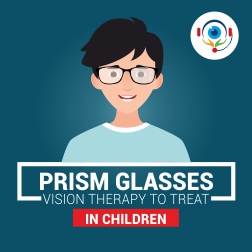Accommodative & Vergence Dysfunction in Children
Disease
Accommodative Dysfunction and Vergence Dysfunction are two types of focus related problems that can possibly affect the eyes of children.
Accommodative dysfunction affects the ways in which the eyes shift focus from near to distant objects. Vergence dysfunction affects the manner in which the eye muscles function.
The term 'vergence' simply refers to the way the eyes converge (turn in) or diverge (turn out).
Causes
These two dysfunctions are often paired together because they control the ways by which the eyes focus and the eye muscles move our eyes.
A number of factors together can lead to problems with focus and not just one alone.
Children with poor health, those who have suffered from chronic fatigue, bad influenza or glandular fever have higher chances of suffering from accommodative dysfunction. Misalignment of the eyes is often the cause of vergence dysfunction.
Children with accommodative and vergence dysfunctions are found to experience the following symptoms -
1. Blurred Vision
2. Double Vision
3. Ocular Discomfort
4. Headache
5. Decreased Concentration
6. Fatigue
7. Motion Sickness
It has been observed that children with accommodative or vergence dysfunctions more often than not find themselves giving up on reading altogether. The reason being, it creates a great amount of stress in them, ultimately having a huge impact on their performance in school.
Diagnosis
It is extremely important to get accommodative and vergence dysfunction diagnosed at an early age. If left undetected, it could impact the child's performance in school.
Therefore, when you begin noticing the above mentioned symptoms, take your child to the doctor for an eye examination.
Treatment
The first thing that is done while treating accommodative or vergence dysfunctions, is to address any underlying vision problem like farsightedness, astigmatism or nearsightedness which may exist.
Buying and wearing reading glasses prescribed by the doctor is the treatment method used to correct these underlying vision problems.
Vision Therapy or VT is another treatment method that your child's doctor will recommend. VT often works really well. It involves the use of different instruments and lenses along with eye exercises to help improve your child's ability to focus.
While wearing reading glasses is a recommended treatment method that is used, quite often many children get distracted, and face difficulties when it comes to wearing and taking off their reading glasses. For the ones who do, progressive lenses are a good option.
Although progressive lenses are often associated with people who are in the 40s or above, these lenses can prove to be extremely beneficial for children. It would enable them to see near and distant objects, and read with full comfort and ease.
Wearing a prism is another prescribed treatment method. Prism is a special type of power that can be inserted into lenses of the eyeglass to help reduce the effort used by eye muscles to converge and diverge. Wearing a prism will also reduce your child's eye strain and fatigue.
Surgery
Eye muscle surgery may be recommended by your doctor if your child has either of the dysfunctions. Surgical treatment will aid in permanently adjusting the eye muscles of your child's eyes.
Takeaway
Treatment can certainly fix both accommodative and vergence dysfunctions. The key is to get the problem diagnosed at the earliest.



